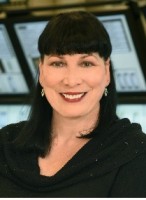Imagination is the Key to Everything!
Remember when you were a child on a long road trip to grandma's house before cars were equipped with televisions? My dad would tell us to imagine that we were watching an episode of Star Trek, and my sister and I would run through every nuance of the show in our minds. As the imaginary show ended, we were amazed to find ourselves in front of grandma's house.
Imagination is so important to every aspect of our lives -- whether in school, work, art, or science and engineering. Without the power to imagine and dream we would never obtain that wonderful version of our world our minds can see.
As both a scientist and an artist, I have found there is a unique symbiosis between creativity, imagination and research. I have a favorite saying, "If you can imagine it, you can build it" and I apply this philosophy not only to new inventions, but also to STEM (science, technology, engineering and mathematics) education and outreach for both children and adults.
We are in an amazing time in our history where technology that was once considered science fiction is now science fact. How did we get here? It took time, imagination and perseverance! How many of us while watching our favorite sci-fi show have thought, "I want one of those gadgets!" I know I did. I wanted a Star Trek communicator so badly when I was a kid, and now as an adult I have one in my pocket ... an iPhone. Somewhere along the path to today's iPhone was someone who not only imagined the communicator in the real world, but acted on their idea and brought it to life. Is it as easy as it sounds? Not really. There have been many successes and failures along the way. It has taken time to get to where we are, but without imagination, and the will to follow our ideas to completion, humanity would never have been able to reach for the stars and beyond.
Dreamers and imaginers change the world. They also help the next generation by passing on their imagination and love of STEM careers so the cycle can continue as we pay it forward one generation to the next. So how do we teach STEM? For me it means using some imagination, a bit of chemistry, and a lot of Legos! What better way to introduce all ages to clean nuclear energy than by building their very own Experimental Breeder Reactor No. 1 (EBR-1).
I designed Atomic Town Power to start a conversation on what nuclear energy is all about and how it is a clean solution to our growing energy needs.
Atomic Town Power has been submitted to Lego Ideas and it is open for voting. When the project reaches 10,000 votes (supporters), it will be reviewed by Lego for the chance to become an official limited edition set around the world! The ability to use fun tools, like Legos, invites students and adults to start a conversation about nuclear energy.
For all those interested in teaching tools on STEM outreach, please visit the American Nuclear Society's Navigating Nuclear and check out the resources on how to start a STEM conversation, science teaching tools and project ideas. Vote for Atomic Town Power by searching "atomic" and hit the supporter button. Remember, without those who imagine great things and do the impossible, our world will cease to shine so brightly.
 Dr. Catherine Riddle is a research scientist in radiochemistry at the Idaho National Laboratory. She has 20 years of experience in the area of radiochemistry and radiochemical separations and her research includes both nuclear science and technology and national and homeland security areas. Catherine is an internationally recognized scientist for her work in areas of neutron/antineutrino detection, oil and heavy metal remediation as well as a champion of STEM programs for K-12 students.
Dr. Catherine Riddle is a research scientist in radiochemistry at the Idaho National Laboratory. She has 20 years of experience in the area of radiochemistry and radiochemical separations and her research includes both nuclear science and technology and national and homeland security areas. Catherine is an internationally recognized scientist for her work in areas of neutron/antineutrino detection, oil and heavy metal remediation as well as a champion of STEM programs for K-12 students.

